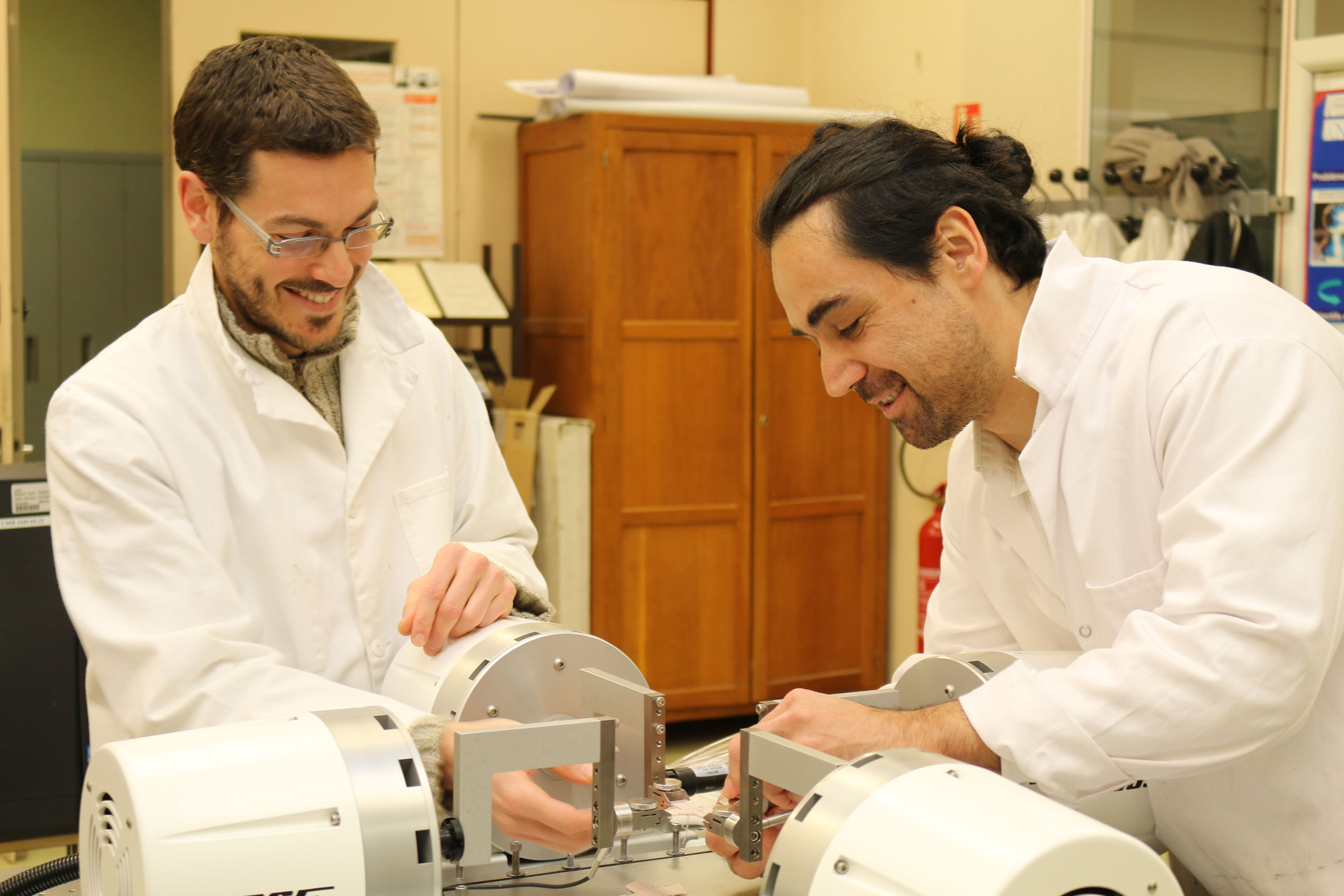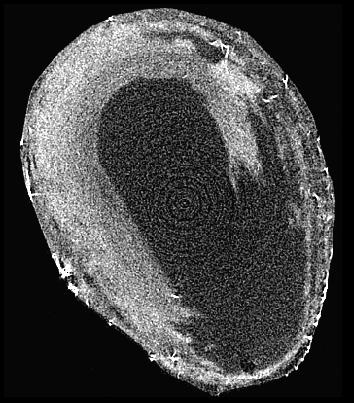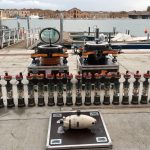Twin ERC grants for research on the aorta
In 2015, the Mines Saint-Étienne engineering and health center was awarded two grants by the European Research Council (ERC). This funding was for two five-year projects on ruptured aortic aneurysms in the Sainbiose laboratory[1]. Pierre Badel received a €1.5 million starting grant (young researcher grant), and Stéphane Avril received a €2 million consolidator grant (for putting together a research team). 2020 marks the end of their grants and the related research projects. On this occasion, I’MTech conducted a joint interview with these two researchers to discuss their results and the impact of these ERC grants on their work.
Your two ERC grants were awarded in 2014 and started in 2015, focusing on similar topics: the biomechanics of the aorta in the context of ruptured aneurysms. What were the particularities of each of your projects?
Pierre Badel: The starting point for my project, AArteMIS, was to better explain the resistance of the walls of the aorta. In 2014, we had just developed in vitro tests to study the mechanical strength of this artery. The ERC grant was used to add experiments on the microstructure. In concrete terms, developing protocols to draw on these materials and study the structural properties when the wall breaks.
Stéphane Avril: My Biolochanics project had a degree of overlap with AArteMIS. We had recovered aneurysm tissue from real patients through our partnership with Saint-Étienne University Hospital, and we wanted to characterize the mechanical stresses in these tissues in order to understand how an aneurysm develops and how it ruptures. The two projects were not designed to work together, it is not common to have two ERC grants in the same team. However, the evaluation committees for the starting grant and the consolidator grant applications are different, which meant that the two projects were judged independently and both ended up receiving grants. The connection between the two projects was made afterwards.
In vitro reproduction of an aortic dissection for the study of aneurysm rupture. Here, the image is made by X-ray tomography on a rabbit artery.
How did you adapt the research in each of the projects to what was being done in the other?
SA: When we learned that we had been awarded the two scholarships, I redesigned my project. I turned my focus towards the mechanical and biological aspects of the research. Rather than studying the mechanical reasons for aneurysm rupture and their relationship to artery wall structure – which the AArteMIS project was already doing – I focused on early aortic wall changes and their relationship to the environment. For example, the study looked at how blood flows through the aorta and how this affects the development of the aneurysm. We also launched a new protocol in the project to include patients with very small aneurysms. We are still monitoring these patients today, and this gives us a better understanding of the development of the pathology.
PB: For my part, I stayed fairly close to the planned program, i.e. the mechanical study of the material of the artery. The only difference with the original project is that we were able to look further into the structural aspect in the rupture of walls. We had the opportunity to use a new technique: X-ray tomography. This is like a CT scan, but suitable for very small samples. This allowed us to work on each layer of the vessels that make up the wall of the aorta, which have different properties.
These two projects have gone on for five years and will come to an end in a few months. What are the key findings?
PB: For AArteMIS, we now have experience that proves that even if we know the precise thickness of an aneurysm, we cannot predict where it will break. We are very proud of this result because a material will usually break at its thinnest point. However, this approach is wrong. This result helps in the diagnosis of aneurysms by explaining to practitioners that there is more involved than just looking at the thickness of the aortic wall when deciding whether an aneurysm is at risk of rupture.
What about the results of the Biolochanics project?
SA: There are two things I’m very happy about. The first is having finished a scientific article that took 5 years to write. It concerns the development of a method to reconstitute the elasticity map of vessels. It’s a very interesting technique because no one had managed to make an elasticity map of the vessels in the aorta before us. We have filed a patent, and the technique could be used in pharmacological research. The second result is that we have developed a digital model to simulate the accelerated aging of the aorta according to biological parameters. This is a step towards the development of a digital twin of the aorta for patients.
The research conducted under Stéphane Avril’s ERC grant has led to the development of a digital model to simulate the development of an aneurysm (in red on the right) based on biological parameters of the initial artery (left).
Read on I’MTech: A digital twin of the aorta to prevent aneurysm rupture
An ERC grant provides major funding over five years. How do these funds help you to develop a research project in concrete terms?
PB: First of all, an ERC grant means that for a few years we don’t have to waste time looking for money. This is a great comfort for researchers, who constantly have to apply for funding to conduct their work. Specifically for my project, the grant allowed me to recruit three PhD students and three post-docs. A whole team was put together, and that has given us greater research power. In our discipline, there are also many experiments involving expensive tools and equipment. The grant makes it possible to acquire state-of-the-art equipment and to set up the experiments that we wish.
SA: It’s similar for me: we were able to hire nine post-docs for Biolochanics. That’s a considerable size for a research team. The financial comfort also means that you can devote time to scientific resourcing and collaborations. I have been able to spend one to two months each year at Yale University in the United States, where there is also a very good team in specialized biomechanics of the aorta, led by Jay Humphrey.
Read on I’MTech: How Biomechanics can Impact Medicine – Interview with Jay Humphrey
How does being responsible for a project funded by an ERC grant affect your life as a researcher?
SA: There’s a lot of time spent managing and organizing. It’s demanding, but you can see the benefits for the laboratory directly. It is time that is well spent, and that is the main difference from having to spend time looking for funding, where the outcome is more uncertain. It also means a lot of recognition for the work. As researchers, we are solicited more often, we receive invitations that probably would not have come without the ERC grant. In terms of international interaction, it makes a significant difference.
As you approach the end of the projects – the end of December for you Stéphane, and the end of October for you Pierre – how do you envisage the future of your research?
PB: Right now we’re at full throttle! We still have several scientific articles in progress. The project officially ends in the fall, so I’m slowly starting to look for funding again. For example, I have a local project that is about to start up on soft tissue rupture for abdominal wall repair, funded by the Rhône-Alpes Region, Lyon University Hospital, Insa Lyon, and Medtronic. But the next few months will still be very busy with the end of the AArteMIS project.
SA: During the ERC grant period, we have little time to initiate and coordinate other projects. For the last five years, my approach has been to jump on trains without driving them. This has involved associations with other academic partners to submit projects, but without being a leader. Recently, one such project was accepted for funding under a Marie Curie International Training Network Action, European funding for the recruitment of cohorts of doctoral students. The laboratory is thus participating in the supervision of 6 theses on the digital twin for aneurysms in the aorta starting in the spring of 2020. In addition, I plan to take advantage of the end of this project to see what is being done elsewhere in my field of research. For one year, I will have a position as a visiting professor at the Vienna University of Technology in Austria. It’s also important to give yourself time in your career to open up and build relationships with your peers.
[1] The Sainbiose laboratory is a joint research unit of Mines Saint-Étienne/Inserm/Jean Monnet University
Interview by Benjamin Vignard, for I’MTech.






Leave a Reply
Want to join the discussion?Feel free to contribute!